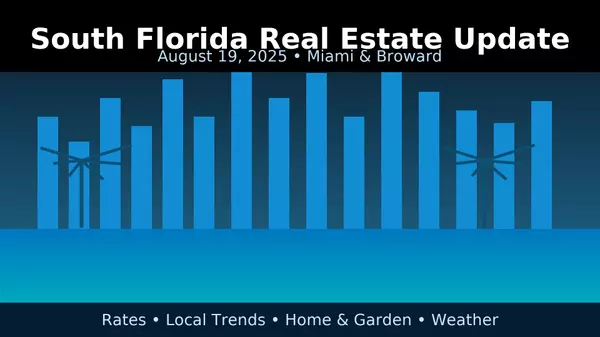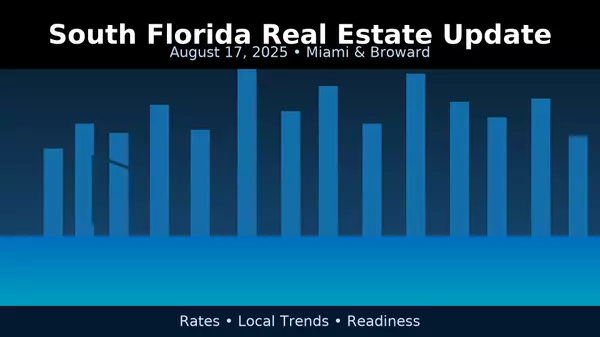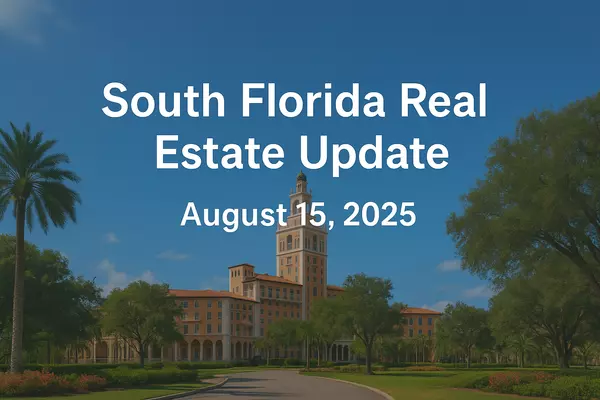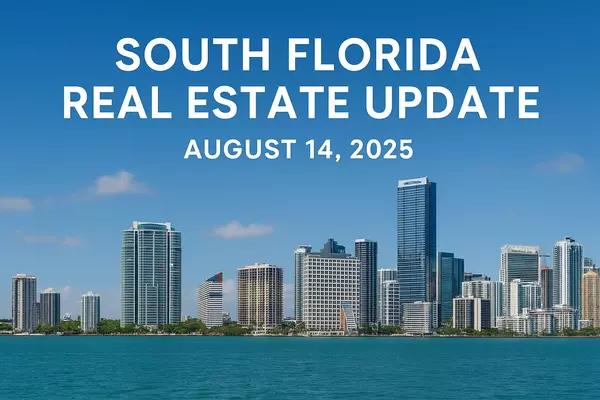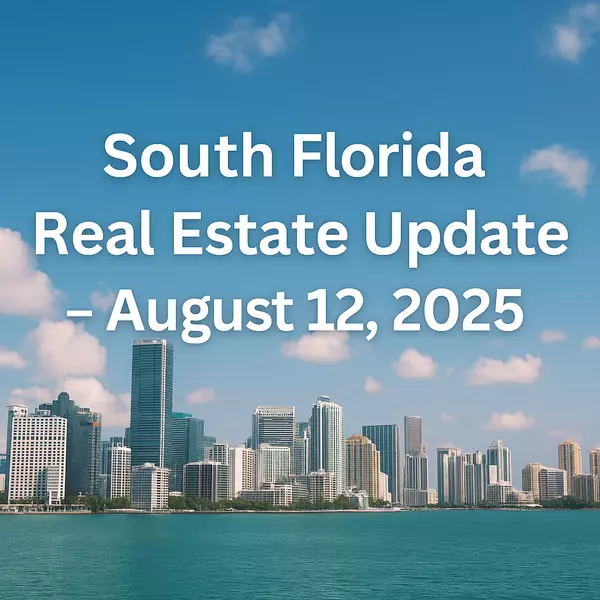Why have home prices continued to go up in Miami and why they are not going to be coming down.
by William Gartin
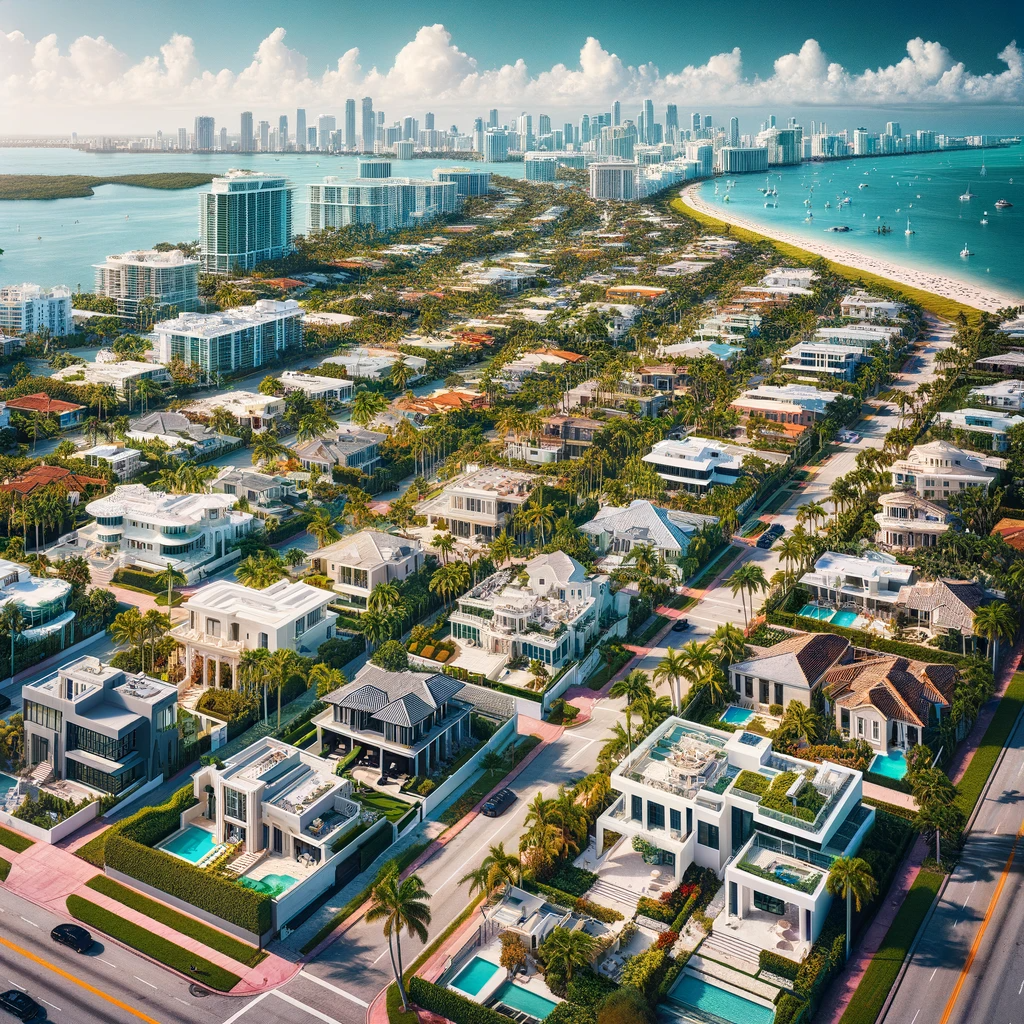
The Miami real estate market has shown resilience and strength over the past few years, and the current outlook suggests that this trend will continue, preventing a significant decrease in home prices in the near future. Here are some key factors supporting this outlook:
Stable Market with Growth Expectations Zillow's one-year forecast as of November 2023 projects a 1.9% increase for the Miami market, indicating a continued upward trajectory in housing prices. The market has a healthy inventory with 33,860 properties for sale as of November 2023 and a balanced median sale-to-list ratio of 0.976 as of October 2023, reflecting a stable market environment.
Population Growth and International Appeal Miami's population has been steadily growing, driven by both domestic and international migration. From 2020 to 2024 increase of approximately 82,132 people in Miami-Dade County. This constant influx of people creates consistent demand for housing, further bolstered by Miami's international allure due to its vibrant culture and pleasant climate. This diverse population presents opportunities in various real estate sectors, including residential and commercial properties.
Economic Strength and Job Market Miami boasts a diverse economy, contributing to its real estate market's resilience. The city's low business taxes and absence of state income tax, coupled with the strength in domestic and international tourism, further support the real estate market.
Rising Home Values The median home value in Miami is at an all-time high, having risen nearly $200,000 in the last five years. The market has seen a substantial year-over-year increase of 25.8%, outpacing the national average. This trend is a clear indicator of the strength and growth potential of the Miami real estate market.
In November 2023, Miami's home prices were up by 12.4% compared to the previous year, with homes selling for a median price of $590,000. By 2024, the average last sold price of homes in Miami was reported to be $677,500. This indicates a significant increase in home values over a relatively short period.
The Southeast Florida housing market, including Miami-Dade County, is expected to continue seeing price appreciation, although at a more modest pace. Home prices in the region are projected to rise by about 5% in 2024, following a cumulative price gain of over 50% since 2019. This continued price growth, despite an increase in inventory and a slowdown in the selling rate, suggests a resilient housing market.
Moreover, the entire Florida housing market is anticipated to strengthen in 2024, driven by factors such as population and business growth. Florida's appeal to remote workers, its growing job market, and a favorable climate for business and living are expected to sustain demand for homes.
Large investment firms and entities like BlackRock and Invitation Homes have become significant players. They often purchase residential properties in bulk in the Miami area to rent them out. This trend has become more pronounced in Miami, known for its appealing real estate market due to its vibrant culture, favorable climate, and status as a gateway to Latin America. These institutional investors bring considerable financial resources, enabling them to acquire numerous properties across the region, sometimes competing directly with individual homebuyers, and contributing to the dynamics of Miami's housing market.
In summary, while Miami and the broader Southeast Florida region have seen a notable increase in home prices in the past year, the market dynamics indicate continued growth in home values, albeit at a slightly slower pace.
Low Housing Supply and High Demand The housing supply in Miami has dropped significantly, currently standing at an average supply of 3.1 months. This reduction in available homes, combined with the high demand, makes it a challenging environment for buyers but a favorable one for sellers and investors.
Rising Rental Rates Rental rates in Miami have also been on the rise, further indicating the strength of the real estate market. The median rental rate in Miami is $2,010, which is higher than the national average of $1,704. The increase in rental rates is consistent with the overall trend in property values and the growing demand for housing in the area. For investors, this suggests a promising outlook for rental income from properties in Miami.
Shift in Buyer Power There has been a noticeable shift in the Miami real estate market, with fewer buyers paying over the list price compared to the pandemic-fueled home buying frenzy of 2021. This shift indicates a move towards a more balanced market where overheated bidding wars are becoming less common. However, it should be noted that this does not necessarily translate to a decrease in home prices, but rather a change in the negotiation dynamics.
Increased Inventory Levels While supply levels in the Miami metro area have increased, giving buyers more options, they remain low from a historical perspective. This partly explains the slowdown in the rate at which homes are selling.
However, even with this increased inventory, the overall market conditions continue to support strong home values.
Regional Economic Factors Southeast Florida’s housing market, including Miami, is supported by a resilient and dynamic economy. Factors like low business taxes and a reduction in the sales tax rate levied on Florida businesses renting or leasing commercial property have improved the business climate in Florida. This economic environment is likely to continue attracting businesses and individuals to the area, sustaining demand in the real estate market.In recent years, Miami has been actively attracting companies to relocate or expand in the area. In 2022, fifty-seven companies either relocated or expanded to Miami-Dade County. By early 2023, 16 more firms had committed to relocate or expand in the county, planning to create 4,000 new jobs. This initiative, led by the Miami-Dade Beacon Council and supported by local government efforts, aims to attract higher-paying jobs and leverage Miami's talent base and global connections. Companies like Kaseya and LeverX have already made significant moves to Miami, benefiting from the region's favorable business environment and international connection
Luxury Market Strength Miami's luxury real estate market, particularly for homes priced at $1 million or more, continues to see robust demand from high-income and high-net-worth buyers. There's a significant supply of luxury homes, with months' supply at 18 to 24 months, aligning with pre-pandemic levels. This segment of the market is expected to maintain its strength.
Conclusion In summary, the Miami real estate market remains strong due to a combination of factors including population growth, economic strength, low housing supply, and rising home values. These elements contribute to a market that is likely to maintain its resilience and growth, making a significant decrease in home prices unlikely in the near future.
Categories
Recent Posts




